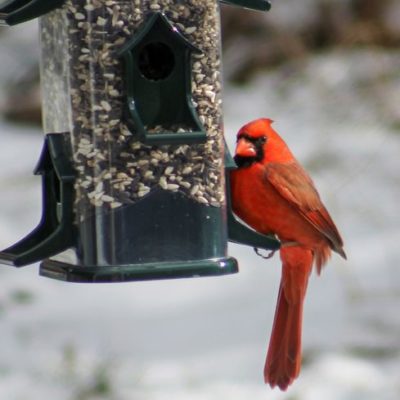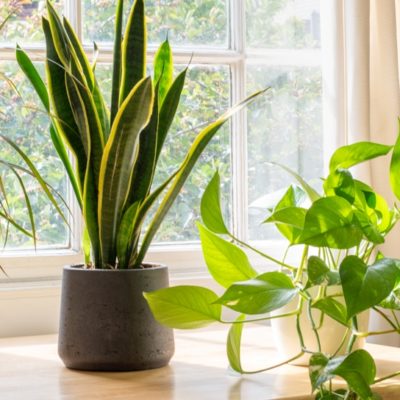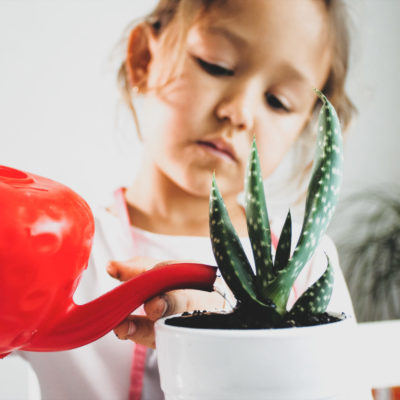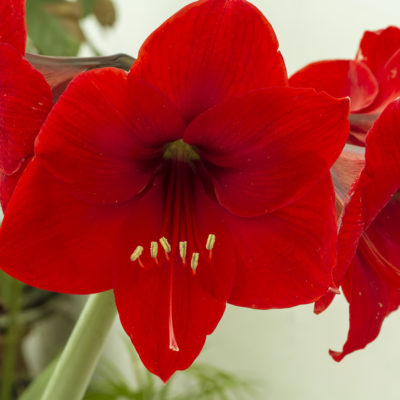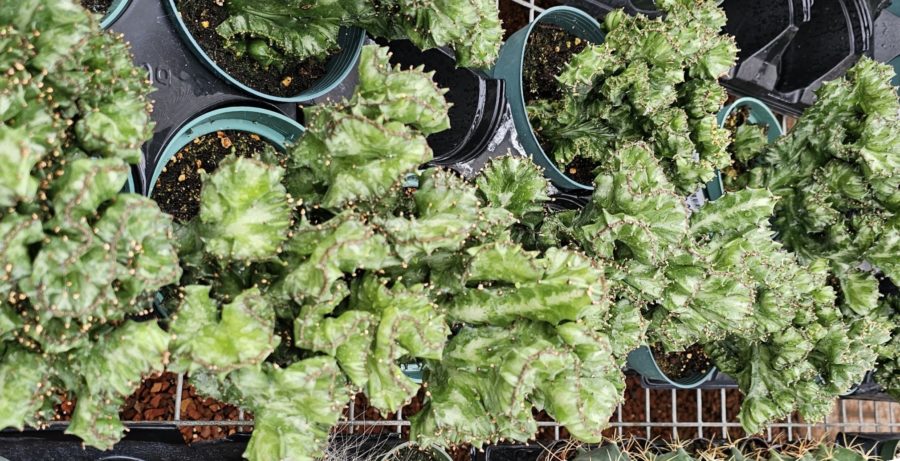
Plant Profile: Euphorbia lactea ‘Cristata’
Cacti come in so many different sizes and shapes, and Belgian’s Cactus & Succulent House tries to represent as many varieties as possible. One of the most intriguing (not to mention rare) specimen is the Euphorbia lactea ‘Cristata’ – sometimes called a “coral cactus”. You just need one look to know where that nickname comes from, and you can bring home a potted cutting from one of Belgian’s giant mother plants!
The ‘Cristata’ features a dense network of fan-shaped arms that twist and turn into each other, much like the ridges seen in coral reefs. They are mostly green but appear to have a multi-tone effect as the light plays and bounces off all those snaking arms and valleys. If you look closely at their ridges, you’ll see that ‘Cristata’ lacks a very defining cactus feature: spines! Where other cactus varieties have sharp spines, this Euphorbia has sharp little nubs that won’t stab through your finger, though they may catch on your skin or clothing.
These ‘coral cacti’ are incredibly unique and difficult to find, so Belgian’s potted ‘Cristata’ are cuttings from the mother plants displayed around the Cactus & Succulent House. They are very slow to root, taking a year or more before they are ready to go out into the world. But the wait is worth it to have such a specimen in your desert collection! Fun fact: the grafted “coral” cactus, which are occasionally available from our suppliers, is actually a ‘Cristata’ arm grafted onto a second upright cactus!
Care for your ‘Cristata’ just as you would any other cactus:
Light: Bright, Direct Light – minimum 4 hours of direct sunlight per day but the more the better!
Water: Let dry thoroughly then water well. You may have to water several times (draining after each) to ensure the moisture is absorbed into the soil.
Fertilizer: Use an all-purpose fertilizer at half strength twice a year, once in spring and once in summer. You can also use a Cactus fertilizer at full strength at the same intervals.
Care Tips: Most cacti prefer to stay rootbound. When repotting is required, go up one pot size (i.e. from a 4” pot to a 5” pot) and use cactus soil for extra drainage. Handle plants carefully when moving and/or repotting; kitchen/barbeque tongs work very well, as does using the back of a spoon to press down on the soil.
And you could even put them outdoors for the summer! Be sure that the temperatures stay above 15°C, day and night. Gradually adjust them to the outdoor elements to reduce the risk of sunburn and overall stress. Place in morning sun for just an hour or two on the first day, then bring inside; on the 2nd day they can stay out in morning sun until around 11am. Keep increasing their exposure to direct sunlight by a few hours each day until they are accustomed to their new outdoor home, about a week or so depending on the season.
Your cactus will dry out faster as it soaks up all that direct sunlight, so check your pots daily and water deeply as needed. And be aware if it’s a rainy summer that they do not get too much water – you may have to move them to a protected spot out of the rain or move them back inside.


